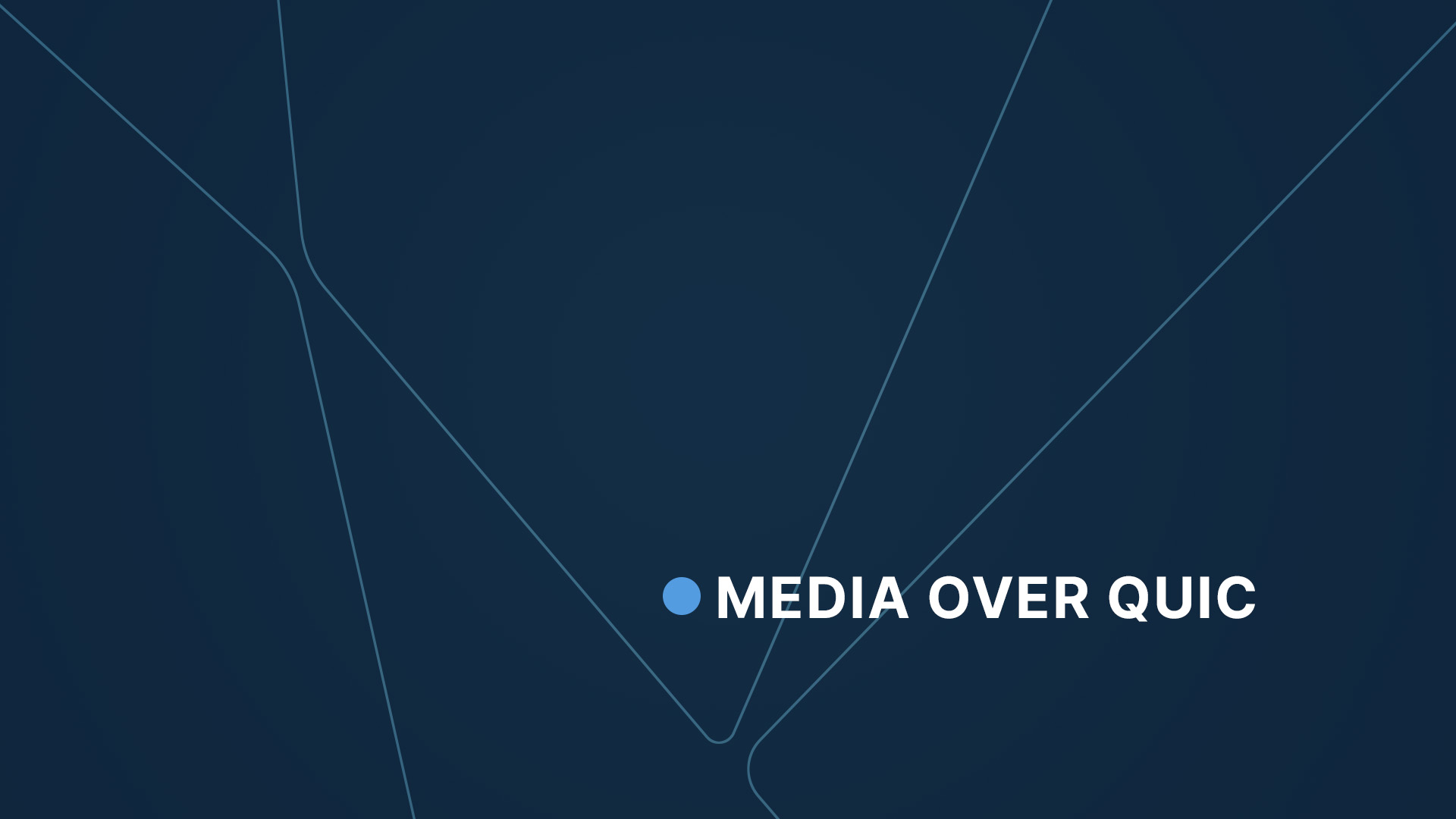As Vindral LiveCloud is built to maintain an edge, to stay Ahead of the Curve, we are set on adopting new technologies that enable quality improvements for future readiness. Media over QUIC has started gaining traction and is one ingredient of the Vindral LiveCloud technical road map.
What is MoQ?
Media Over QUIC (MoQ) is a protocol that utilizes the features of QUIC to improve the delivery of media files over the internet. As an emerging standard it is a healthy addition to the options available for file transport online.
The underlying protocol QUIC is a UDP based protocol developed under the support of Google and later refined and standardized by the Internet Engineering Task Force (IETF). It aims to address the shortcomings of HTTP/2 TCP connections such as overhead, latency and head-of-line blocking.
Why was MoQ created?
The development of MoQ focuses on the need for a more efficient, robust, and rapid transmission of media content across varying network conditions. Existing media delivery protocols like RTMP, HLS and WebRTC often face challenges such as high latency, packet loss, and congestion, which are huge disadvantages to streaming high-quality video and audio.
The introduction of QUIC resulted in improvements in areas such as connection establishment time, multiplexing without head-of-line blocking, and better congestion control. MoQ builds upon these enhancements with a focus on media streaming, aiming to deliver a good user experience despite fluctuating network conditions.
Advantages over previous solutions
- Reduced latency: The current solutions for delivering media to a scale of millions of users have high latency. MoQ decreases the overall latency in media streaming, while sharing many of the features in current standardized playout solutions.
- Connection stability: Leveraging QUIC’s capability to preserve connections through changes in user IP address (such as when switching from cellular data to Wi-Fi), MoQ ensures uninterrupted media streaming, enhancing viewer satisfaction.
- Stream multiplexing: It allows multiple media streams to be transmitted over a single QUIC connection without mutual interference, an upgrade over TCP protocols where one slow stream can hinder others. MoQ also allows for prioritizing specific media within the transmission.
- Improved packet loss handling: It employs advanced retransmission techniques and adjusts to network conditions in real time, which maintains media quality in suboptimal network environments.
- Scalable: MoQ addresses the scalability issues found in current standardized low-latency solutions (used in video conferencing services for example) It is designed to efficiently handle large-scale media delivery, maintaining low latency even as the number of users increases.
- Codec Agnostic While MoQ does not explicitly claim “codec agnostic” functionality, it is designed to adapt to various codecs through its focus on the transport of media data over the network. This design is independent of the specific codec used for encoding and decoding. Additionally, its integration with WebCodecs, which are browser APIs that facilitate the decoding of various video and audio formats, allows MoQ to leverage the browser’s built-in capabilities for decoding without relying on specific codecs within the protocol itself. This flexibility allows for greater compatibility and futureproofing of the system.
Status and outlook:
MoQ is still under active development and not yet fully standardized, but the protocol is intended to be implementable across both browser and non-browser endpoints and aims to improve scalability and efficiency in media delivery.
Development efforts are also supported by a community of developers who are contributing to open-source projects related to MoQ. This includes work on native components and web components, with ongoing efforts to integrate it with existing tools like ffmpeg and OBS plugins.
Though still in the early stages of development, MoQ promises to offer significant improvements over existing technologies by combining low latency with high scalability, potentially transforming live media delivery as it progresses toward standardization.
How is Vindral integrating MoQ?
Vindral LiveCloud is strategically incorporating Media Over QUIC by prioritizing aspects that directly benefit our operational needs. As the industry explores the potential, our early adoption keeps us on track with advancements in media delivery technology. The standardization of MoQ aligns with our existing infrastructure, enabling continuous improvement in our service offerings. This underscores our commitment to staying Ahead of the Curve and building a modern infrastructure.
If you are interested in learning more about MoQ and how it can benefit your business, please contact us. Our team is happy to discuss how it can be integrated into your media delivery solutions.


